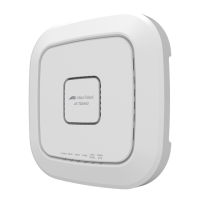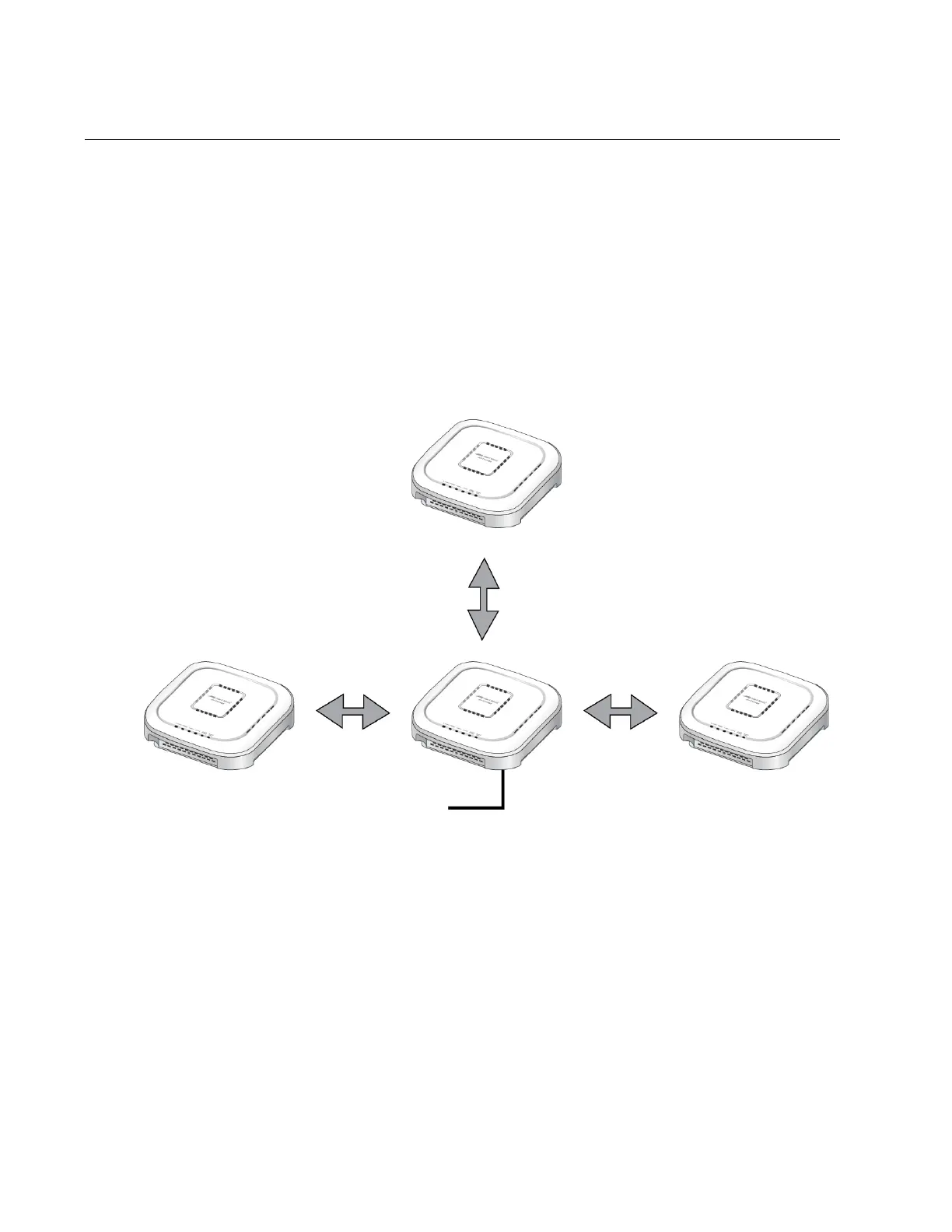Chapter 8: Wireless Distribution System Bridges
112
Introduction to Wireless Distribution Bridges
A wireless distribution system (WDS) bridge is a wireless connection
between access points that allows units to forward traffic directly to each
other over a wireless connection, as if they were connected with a physical
Ethernet wire. The feature is typically used to extend networks into areas
where Ethernet cable installation might be impractical or expensive.
A WDS bridge consists of one parent and up to three children. The parent
is connected to the wired network through its LAN ports. The children
function as wireless clients of the parent, communicating with the wired
network over the WDS bridge to the parent. An example of a parent with
three children is shown in Figure 32.
Figure 32. WDS Bridge
When a child receives traffic from a wireless client that is intended for the
wired network, it transmits the traffic over the WDS bridge to the parent,
which forwards the packets on its LAN ports. Conversely, when a parent
receives traffic on the wired network intended for a wireless client
associated on a child, it transmits the packets to the child over the bridge.
A WDS bridge consists of a radio and a radio channel. You can use
Radio1, Radio2, or Radio3, and any channel. An important rule to follow is
that the parent and children of a bridge must all use the same radio and
channel. The selected radio should only be used for the WDS bridge.
Child
Child Child
Parent
To Wired Network

